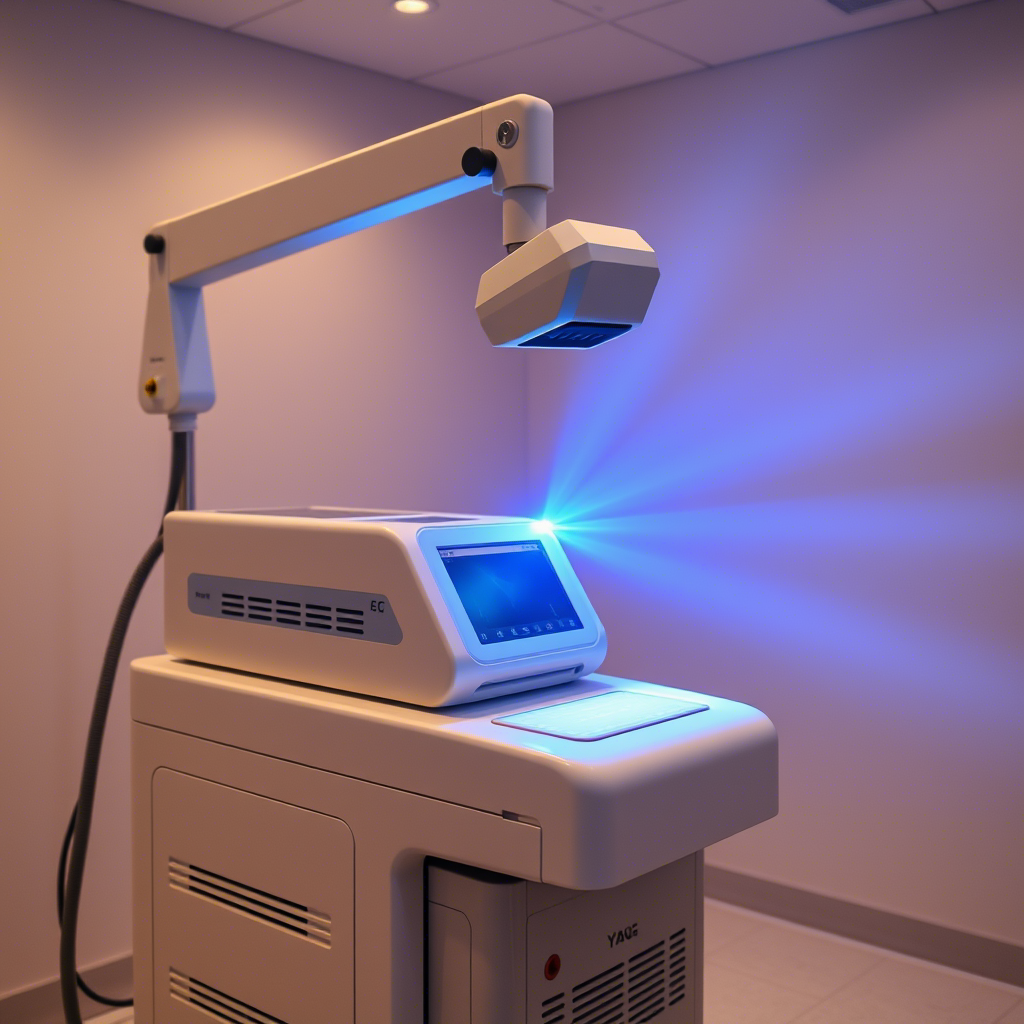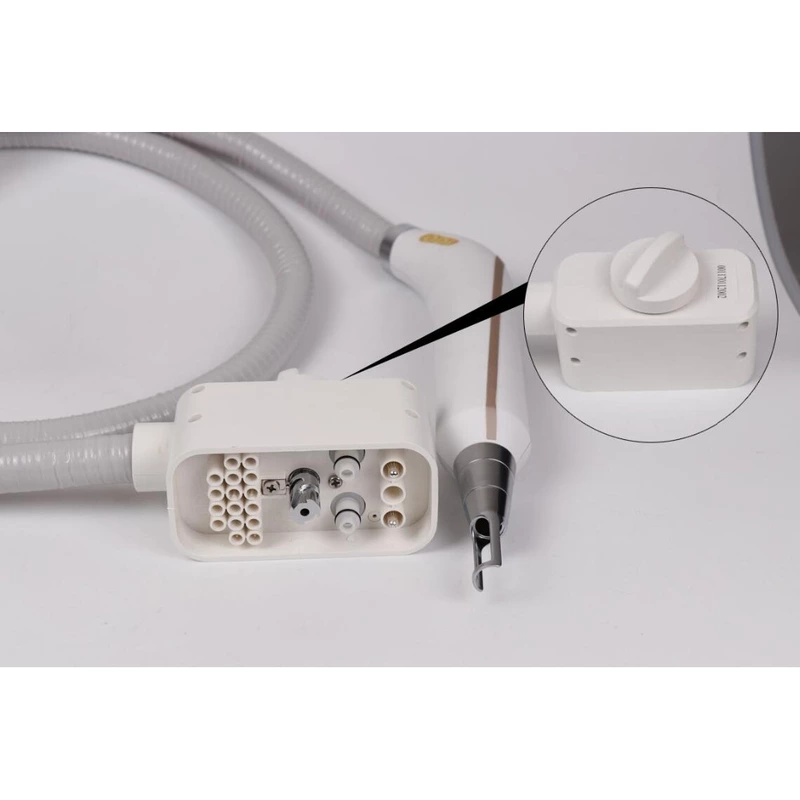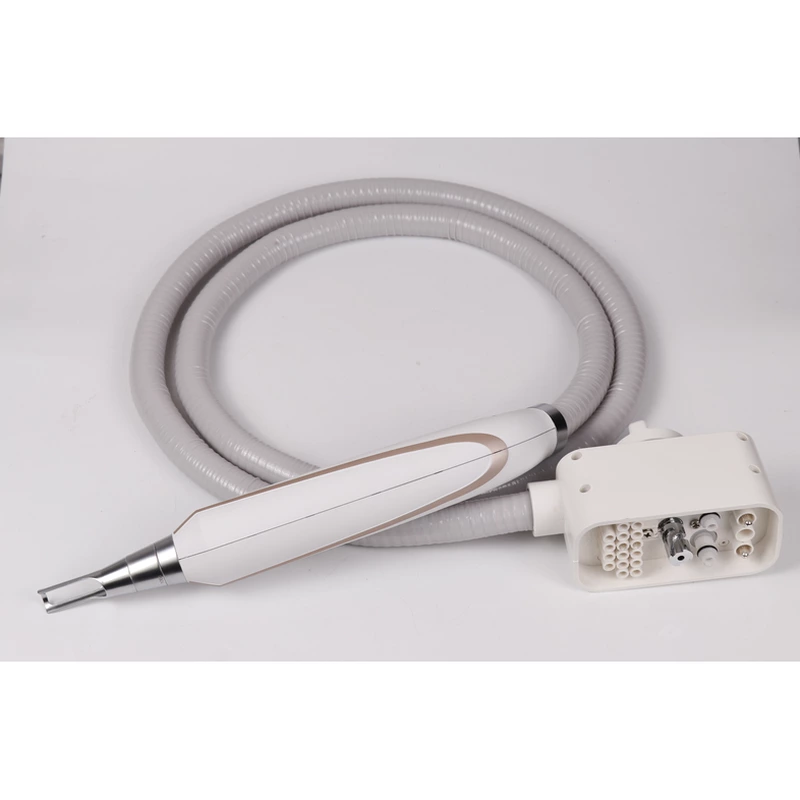Yttrium Aluminum Garnet (YAG) lasers are a type of solid-state laser that have gained significant attention in various medical and industrial applications due to their versatility and effectiveness.
YAG Laser
What is YAG Laser?
Yttrium Aluminum Garnet (YAG) lasers are a type of solid-state laser that have gained significant attention in various medical and industrial applications due to their versatility and effectiveness. The YAG laser operates by exciting YAG crystals with a lamp or diode, producing a high-intensity beam of light. This technology has been widely adopted in fields such as medicine, manufacturing, and research. The significance of YAG lasers lies in their ability to deliver precise and controlled energy, making them an essential tool for various procedures.
History and Development of YAG Lasers
The development of YAG lasers dates back to the 1960s, with the first YAG laser being invented by J.E. Geusic and his team at Bell Labs. Since then, YAG lasers have undergone significant advancements, leading to their widespread adoption in various industries.
- The initial applications of YAG lasers were primarily in the field of material processing, such as cutting and welding metals.
- Over time, YAG lasers have been adapted for medical use, including treatments for various skin conditions and eye disorders.
- Today, YAG lasers are used in a range of medical specialties, including dermatology, ophthalmology, and urology.
Types of YAG Lasers
There are several types of YAG lasers, each with its unique characteristics and applications.
- Nd:YAG Lasers: Neodymium-doped YAG lasers are one of the most common types, emitting a wavelength of 1064 nm. They are widely used in medical and industrial applications, such as laser hair removal and material processing. 
- Er:YAG Lasers: Erbium-doped YAG lasers emit a wavelength of 2940 nm and are commonly used in dermatology for skin resurfacing and removing fine wrinkles.
- Q-Switched YAG Lasers: These lasers are used for tattoo removal and pigmented lesion treatments due to their ability to deliver high-energy pulses.
Medical Applications of YAG Lasers
YAG lasers have a wide range of medical applications, including dermatological and ophthalmological treatments.
- Dermatological Treatments: YAG lasers are used for various skin treatments, such as removing unwanted hair, treating vascular lesions, and rejuvenating the skin. For example, Nd:YAG lasers are effective in treating deeper skin concerns like wrinkles and skin laxity. 
- Ophthalmological Treatments: YAG lasers are used in eye surgery, such as posterior capsulotomy to treat posterior capsule opacification, a condition that can occur after cataract surgery.
- Urological Treatments: YAG lasers are also used to treat conditions like kidney stones and benign prostatic hyperplasia.
Industrial Applications of YAG Lasers
In addition to their medical applications, YAG lasers are also widely used in various industrial processes.
- Material Processing: YAG lasers are used for cutting, welding, and marking various materials, including metals and ceramics. Their high precision and control make them ideal for delicate manufacturing tasks.
- Engraving and Marking: YAG lasers are used for engraving and marking products, providing a permanent and precise way to label or decorate items. 
- Research and Development: YAG lasers are also used in research and development, particularly in the fields of physics and materials science.
Safety Precautions and Maintenance
To ensure the safe and effective use of YAG lasers, proper precautions and maintenance are essential.
- Operator Training: Users should undergo comprehensive training to understand the operation and safety guidelines of YAG lasers.
- Eye Protection: Protective eyewear is crucial when working with YAG lasers to prevent eye damage.
- Regular Maintenance: Regular maintenance is necessary to ensure the optimal performance and longevity of YAG lasers. For more information on laser safety, you can visit the American National Standards Institute (ANSI) website.
Conclusion
YAG lasers are a versatile and powerful technology with a wide range of applications in medicine, industry, and research. Understanding the different types of YAG lasers, their applications, and safety precautions is crucial for harnessing their potential. By following proper guidelines and maintenance procedures, users can ensure the safe and effective use of YAG lasers. As technology continues to evolve, the applications of YAG lasers are likely to expand, offering new opportunities for innovation and advancement.


